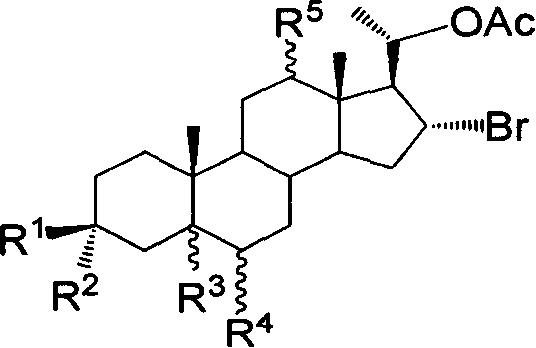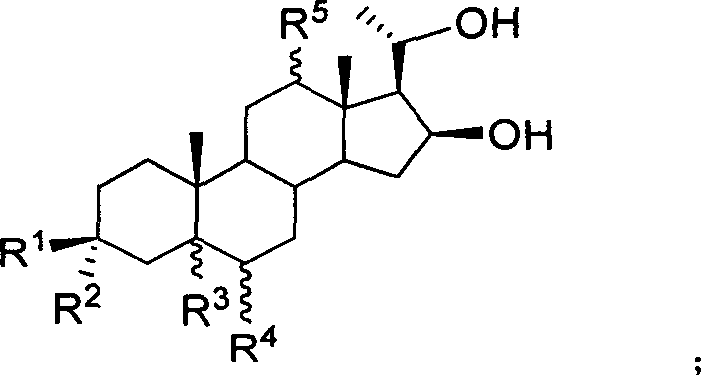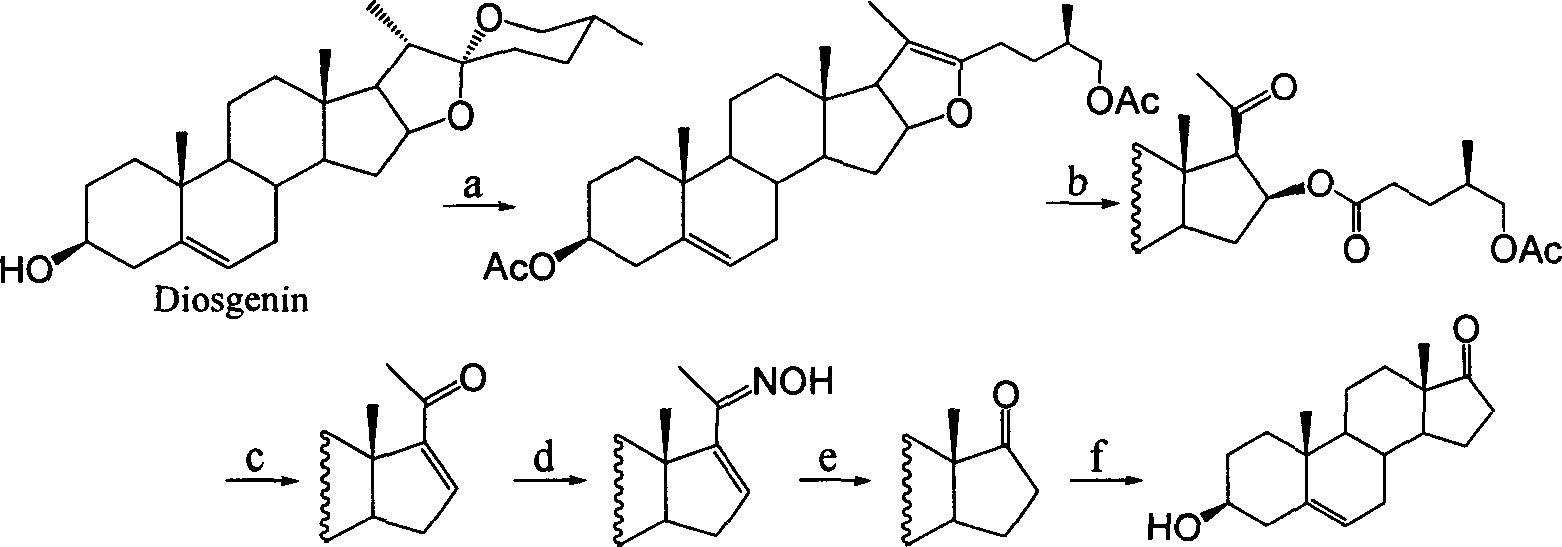16 alpha-bromosteroid compound and its synthesis method
A technology of steroid compound and synthesis method, which is applied in the field of a class of 16α-bromo steroid compound and its synthesis, and can solve the problem of no literature report and the like
- Summary
- Abstract
- Description
- Claims
- Application Information
AI Technical Summary
Problems solved by technology
Method used
Image
Examples
Embodiment 1
[0022] Synthesis of Example 1 Compound 2a and 2b
[0023]
[0024] Put 1 g (3 mmol) of gesterol 1a in a 25 ml dry reaction flask, and add 6 ml of 30% hydrogen bromide-acetic acid solution while stirring and controlling the temperature at 0°C. After the gesterol was dissolved in the 30% hydrogen bromide-acetic acid solution, the temperature was raised to 45° C. and the reaction was continued for 1.5 hours. TLC followed the reaction, and the reaction of gesterol was complete. Acetic acid was distilled off under reduced pressure, and the obtained residue was dissolved in ether. The diethyl ether solution was washed with saturated sodium bicarbonate solution and saturated brine, dried over anhydrous sodium sulfate, and the resulting crude reaction product was concentrated and subjected to silica gel column chromatography to obtain 1.176g of compound 2a (yield 82%) and 0.134g of compound 2b (yield rate 9%).
[0025] Compound 2a, colorless crystal, m.p.123~125℃...
Embodiment 2
[0027] Example 2 Synthesis of Compounds 2a and 2c
[0028]
[0029] Put 339mg (1mmol) gesterol 1a in a 25ml dry reaction bottle, add 1ml of anhydrous dichloromethane to dissolve. With stirring at room temperature, 2 ml of 30% hydrogen bromide-acetic acid solution (5 mmol) was added dropwise to the reaction flask. After dropping, the temperature was raised to 30° C. to continue the reaction for 1 hour. The reaction was tracked by TLC. After the reaction of gesterol was complete, acetic acid and dichloromethane were distilled off under reduced pressure to obtain a residue. The resulting residue was dissolved in ether, washed with saturated sodium bicarbonate solution and saturated brine, dried over anhydrous sodium sulfate, and concentrated to obtain a crude reaction product. The reaction crude product was subjected to silica gel column chromatography (column chromatography eluent: petroleum ether (boiling range 60-90° C.) / ethyl acetate, gradient) to obtain ...
Embodiment 3
[0032] Synthesis of Example 3 Compound 2d
[0033]
[0034] Put 0.832g (2.36mmol) gesteritol 1b in a 25ml dry reaction flask, and add 5ml of 30% hydrogen bromide-acetic acid solution while stirring and controlling the temperature at 0°C. After the gesteritol was dissolved in the 30% hydrogen bromide-acetic acid solution, the temperature was raised to 45° C. to continue the reaction for 2 hours. TLC followed the reaction, and the reaction of gesteritol was complete. Acetic acid was distilled off under reduced pressure, and the obtained residue was dissolved in ether. The ether solution was washed with saturated sodium bicarbonate solution and saturated brine, dried over anhydrous sodium sulfate, and the reaction crude product obtained was concentrated and subjected to silica gel column chromatography to obtain 1.026 g of compound 2d (yield 80.2%).
[0035] Compound 2d, 1 H-NMR (CDCl 3 , 300MHz) δ: 0.65(s, 3H), 0.80(s, 3H), 1.35(d, J=5.2Hz, 3H), 2.04(s...
PUM
 Login to View More
Login to View More Abstract
Description
Claims
Application Information
 Login to View More
Login to View More - R&D
- Intellectual Property
- Life Sciences
- Materials
- Tech Scout
- Unparalleled Data Quality
- Higher Quality Content
- 60% Fewer Hallucinations
Browse by: Latest US Patents, China's latest patents, Technical Efficacy Thesaurus, Application Domain, Technology Topic, Popular Technical Reports.
© 2025 PatSnap. All rights reserved.Legal|Privacy policy|Modern Slavery Act Transparency Statement|Sitemap|About US| Contact US: help@patsnap.com



